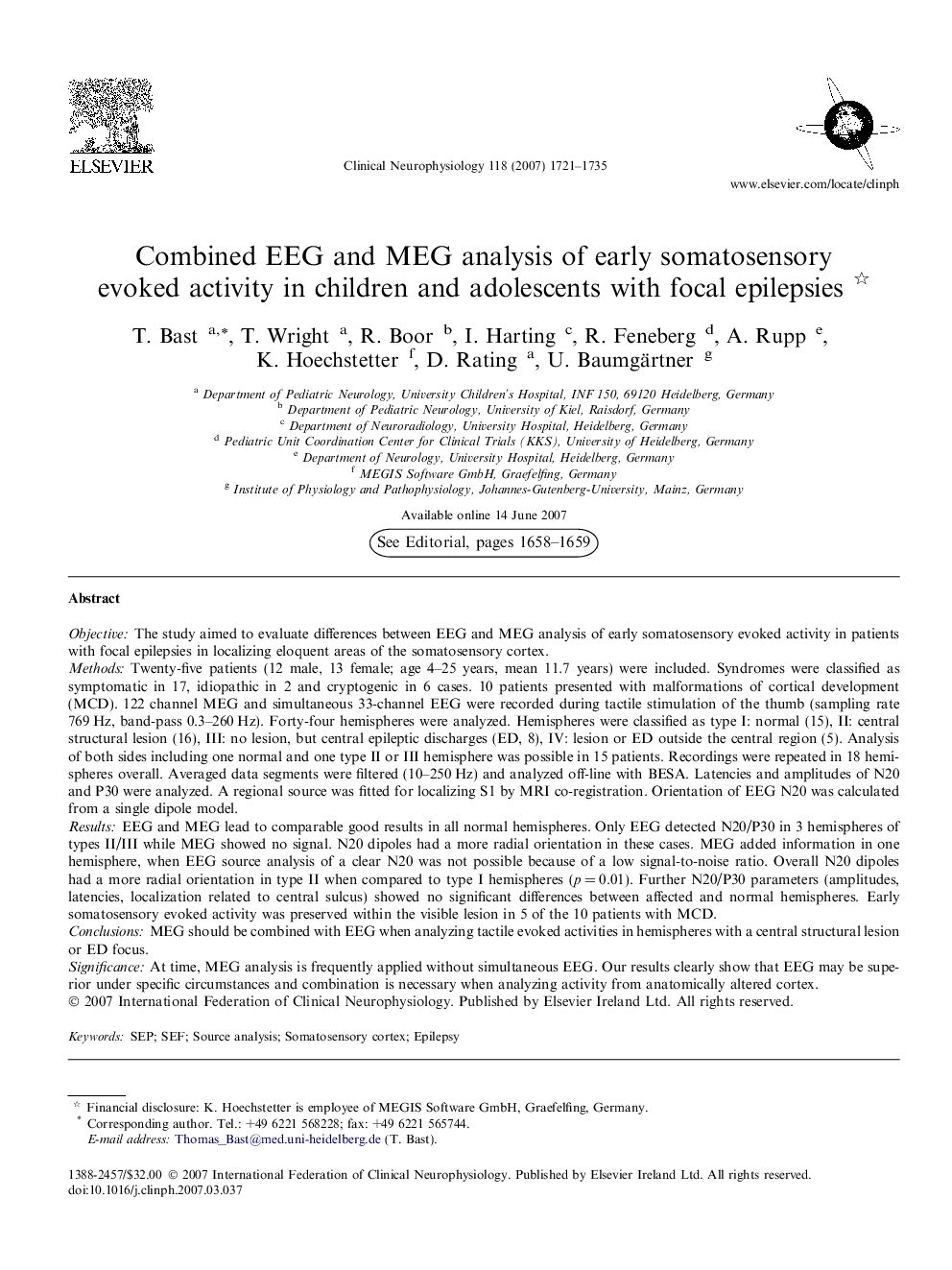| کد مقاله | کد نشریه | سال انتشار | مقاله انگلیسی | نسخه تمام متن |
|---|---|---|---|---|
| 3047779 | 1185065 | 2007 | 15 صفحه PDF | دانلود رایگان |

ObjectiveThe study aimed to evaluate differences between EEG and MEG analysis of early somatosensory evoked activity in patients with focal epilepsies in localizing eloquent areas of the somatosensory cortex.MethodsTwenty-five patients (12 male, 13 female; age 4–25 years, mean 11.7 years) were included. Syndromes were classified as symptomatic in 17, idiopathic in 2 and cryptogenic in 6 cases. 10 patients presented with malformations of cortical development (MCD). 122 channel MEG and simultaneous 33-channel EEG were recorded during tactile stimulation of the thumb (sampling rate 769 Hz, band-pass 0.3–260 Hz). Forty-four hemispheres were analyzed. Hemispheres were classified as type I: normal (15), II: central structural lesion (16), III: no lesion, but central epileptic discharges (ED, 8), IV: lesion or ED outside the central region (5). Analysis of both sides including one normal and one type II or III hemisphere was possible in 15 patients. Recordings were repeated in 18 hemispheres overall. Averaged data segments were filtered (10–250 Hz) and analyzed off-line with BESA. Latencies and amplitudes of N20 and P30 were analyzed. A regional source was fitted for localizing S1 by MRI co-registration. Orientation of EEG N20 was calculated from a single dipole model.ResultsEEG and MEG lead to comparable good results in all normal hemispheres. Only EEG detected N20/P30 in 3 hemispheres of types II/III while MEG showed no signal. N20 dipoles had a more radial orientation in these cases. MEG added information in one hemisphere, when EEG source analysis of a clear N20 was not possible because of a low signal-to-noise ratio. Overall N20 dipoles had a more radial orientation in type II when compared to type I hemispheres (p = 0.01). Further N20/P30 parameters (amplitudes, latencies, localization related to central sulcus) showed no significant differences between affected and normal hemispheres. Early somatosensory evoked activity was preserved within the visible lesion in 5 of the 10 patients with MCD.ConclusionsMEG should be combined with EEG when analyzing tactile evoked activities in hemispheres with a central structural lesion or ED focus.SignificanceAt time, MEG analysis is frequently applied without simultaneous EEG. Our results clearly show that EEG may be superior under specific circumstances and combination is necessary when analyzing activity from anatomically altered cortex.
Journal: Clinical Neurophysiology - Volume 118, Issue 8, August 2007, Pages 1721–1735